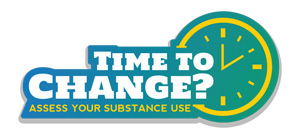
Cannabis is the most commonly used federally illicit drug by college students.
An analysis of national survey data indicates that students attending college are at a significantly higher risk of beginning to use cannabis than those not enrolled in college, underscoring the need for improved prevention efforts. Studies have also established an association between cannabis use and poor academic performance in college. There are also negative short and long-term health effects of using cannabis, and long-term use can lead to addiction and/or dependence.
Scope
National Data
In 2024, 34.9% of college students reported using cannabis in the past year and 22% reported using cannabis in the past month.1
While cannabis use among students reached an all time high in 2020 at 25%, use has decreased to 22% in 2024.
Of those who begin smoking cannabis, 10% will develop a substance use disorder (SUD). 30% of current users meet the criteria for cannabis use disorder.2
An advisory statement from the U.S. Surgeon General notes the dangers of cannabis use on brain development.
Research from the National Institute on Drug Abuse (NIDA) part of the National Institutes of Health (NIH) indicates that cannabis use may be associated with increased risks of thoughts of suicide, suicide plans, and attempts among youth.
Missouri Data
Missouri college students reported frequency of cannabis use in the past year:
| Did not use | 1-6x/year | 1-2x/month | 1-2x/week | 3x/week+ | Daily | Prefer Not to Respond |
| 67% | 12% | 5.1% | 3.4% | 3.8% | 5.3% | 3.4% |
Students reported using cannabis at least once in the past year in the following ways*:
| Smoked (e.g. joint, bong) | Edibles (e.g. brownies, candy) | Vaporized (e.g. e-cig) | Derivatives (e.g. wax, oils, dabs) | Other ways |
| 23% | 23% | 20% | 8.5% | 2.1% |
Students who use report experiencing the following*:
| Felt in a fog/slug/dazed the morning after using | Needed to use more due to increased tolerance | Felt sick/vomited | Attended class after using |
| 53% | 31% | 16% | 22% |
Students reported using cannabis in the following places in the past year*:
| Where one lives | Social gathering off-campus | Outdoors | At parent’s/family’s residence | Parties | Bars |
| 64% | 55% | 35% | 35% | 27% | 18% |
While it is never safe to use cannabis and drive a vehicle, 29% of students who use cannabis report driving after using.
39% of students who use cannabis have indicated that they are thinking about, ready to try, or are currently trying to use cannabis less or quit.
*Question in select all that apply. All Missouri student data comes from the 2025 Missouri Assessment of College Health Behaviors.
Data Briefs and Fact Sheets
At a Glance
- 2025 MACHB At a Glance: Cannabis
- 2024 MACHB At a Glance: Substance Use
- 2021 MACHB At a Glance: Cannabis Use
- 2021 MACHB At a Glance: Key Findings: Substance Use
- 2020 Students’ Well-being Survey Key Findings: Cannabis, Prescription Drugs, and Tobacco/Nicotine Use
- 2019 MACHB At a Glance: Substance Use and Thoughts of Transferring
- 2019 MACHB At a Glance: Substance Use and Sense of Belonging
- 2019 MACHB At a Glance: Misperceptions of Substance Use
- 2019 MACHB At a Glance: Key findings from the 2019 Missouri Assessment of College Health Behaviors
- 2019 MACHB At a Glance: Substance Misuse and GPA
Fact Sheets
- THC and CBD: Understanding the Components of Cannabis
- Marijuana and the Drug-Free Schools and Campuses Act
- Cannabis-Related Health Education Opportunities
Volume 13
Volume 12
Volume 11
Volume 10
Volume 9
- Volume 9, Number 11: Cannabis Use among Missouri College Students
- Volume 9, Number 7: Social Norms of Alcohol and Cannabis Use
Volume 8
Volume 7
Volume 6
- Volume 6, Number 12: Marijuana and Other Illicit Drug Use
- Volume 6, Number 9: Substance Use Among Missouri College Students and Intentions to Change
- Volume 6, Number 7: Substance Impaired Driving
Volume 5
Volume 4
Volume 3
Volume 2
Volume 1
Best Practices
Risk and Protective Factors
Risk Factors
- Lack of supervision by parent/guardian
- Access
- Associating with peers who use drugs
- Club culture or party culture
- Preexisting mental health problems
- Norms that permit or encourage cannabis use
- Adolescent risk-seeking behavior
- Lack of organized activities
Protective Factors
- High self-esteem and sense of identity
- Development of healthy coping skills
- Norms discouraging cannabis use
- Feelings of connectedness
- Campus policy (and enforcement)
- Effective prevention programming in place
Evidence-based Practices and Interventions
Screening, Brief Intervention, and Referral to Treatment (SBIRT)
SBIRT is a process in which the individual is screened, brief motivational interviewing occurs, and the individual is referred to appropriate resources.
Brief Motivational Interviewing (BMI)
Brief Motivational Interviewing (BMI) is a strategy in which a trained professional conducts a brief counseling session, exploring behaviors and resolving feelings of ambivalence towards problem behaviors. An example of this is modifying BASICS for cannabis use (sometimes referred to as CASICS).
Cognitive-Behavioral Therapy (From the National Institute on Drug Abuse)
Cognitive-Behavioral Therapy (CBT) was developed as a method to prevent relapse when treating problem drinking, and can be adapted for cannabis use. Cognitive-behavioral strategies are based on the theory that in the development of maladaptive behavioral patterns like substance misuse, learning processes play a critical role. Individuals in CBT learn to identify and correct problematic behaviors by applying a range of different skills that can be used to stop drug misuse and to address a range of other problems that often co-occur with it.
A central element of CBT is anticipating likely problems and enhancing patients’ self-control by helping them develop effective coping strategies. Specific techniques include exploring the positive and negative consequences of continued drug use, self-monitoring to recognize cravings early and identify situations that might put one at risk for use, and developing strategies for coping with cravings and avoiding those high-risk situations.
- The Minnesota Department of Health and Human Services has an extensive bibliography from 2015 of best practices for marijuana use prevention.
- Higher Education Cannabis Prevention Toolkit from CADE (Coalition of Colorado Campus Alcohol & Drug Educators)
- Michigan Collegiate Cannabis Prevention Toolkit from the Michigan Higher Education Network
iCHAMP (Individualized College Health for Alcohol and Marijuana Project)
The goal of iCHAMP is to motivate students to reduce risky behaviors associated with marijuana/cannabis use. iCHAMP provides a structured opportunity to assess risk, identify potential changes, and help to reduce risk for developing future problems.
The iCHAMP program typically consists of two 60 minute sessions spaced out over a two week span. The first session includes screening, marijuana/cannabis education, and goal setting. The second session provides personalized feedback about marijuana/cannabis use, risks, protective factors, and consequences experienced, as well as norms clarification, ways to reduce future risks, and options to assist in making changes.
Policies
Policy change has been shown to aid in the reduction of cannabis use. Some examples of policy change include strict no-use cannabis policy and policies about impairment on campus.
While state laws across the country are changing, cannabis is still an illegal substance in the state of Missouri. While some counties or cities have chosen to decriminalize cannabis for small amounts, all Missouri colleges and universities are covered under the federal Safe and Drug-Free Schools and Communities Act that prevents the use of illegal drugs on campus.
Individual campuses also have their own policies and procedures for handling possession of illegal drugs, paraphernalia, and other drug violations. Check with your campus law enforcement and/or conduct office for information on specific policies on your campus.
Environmental Strategies
Environmental strategies, alongside policy change, strengthen more accurate peer perceptions about acceptability of use and risks. Some examples of environmental strategies include limiting retailer availability, restricting locations where cannabis can be bought and used, and minimizing youth exposure to cannabis advertising.
Risk Reduction
Risk reduction methods can aid in reducing harmful behaviors of those who have decided to use cannabis already and do not wish to cease use. These strategies aim to minimize negative consequences from use. This can include sharing lower-risk use guidelines.
Social Norms
Social norms campaigns have shown to be effective in changing attitudes and perceptions of individuals related to the safety, prevalence, and risks of cannabis use. Visit the National Social Norms Center to learn more about social norming.
*Adapted from the Michigan Collegiate Cannabis Prevention Toolkit
National and Missouri Resources
National Resources
- National Institute on Drug Abuse (NIDA): drugabuse.gov
- Substance Abuse and Mental Health Services Administration (SAMHSA): samhsa.gov
- SAMHSA Treatment Locator and National Helpline: 1-800-662-4357
- Marijuana Anonymous: marijuana-anonymous.org
- Get Smart About Drugs: getsmartaboutdrugs.gov
- Marijuana Anonymous: https://marijuana-anonymous.org/
- Responsibility Grows Here Colorado Cannabis Education: https://responsibilitygrowshere.com/
- Practitioners Toolbox: campusdrugprevention.gov/content/practitioners-toolbox
- Prevention Action Alliance – Marijuana Fact Sheets: preventionactionalliance.org/learn/about-marijuana/marijuana-fact-sheets
- Washington State Liquor and Cannabis Board – Cannabis Education – https://lcb.wa.gov/education2cb/cannabis_education_links
Missouri Resources
- Missouri Department of Health and Senior Services – Cannabis Regulation: https://health.mo.gov/safety/cannabis/
Inclusion of a particular resource is not an official endorsement from Partners in Prevention or any of our funding sources.
PIP Resources
Time to Change? Assess Your Substance Use
‘Time to Change? Assess Your Substance Use’ is a resource for Missouri college students who are considering quitting or cutting back on tobacco/nicotine or marijuana/cannabis use. This website can help students assess their use, learn about benefits of quitting, and find resources to help them quit. Campus prevention or health promotion professionals in Missouri can also access training and resources to help students quit.
Visit https://www.mopip.org/change/ to learn more.

Fact Sheets
- THC and CBD: Understanding the Components of Cannabis
- Marijuana and the Drug-Free Schools and Campuses Act
- Cannabis-Related Health Education Opportunities
Educational Materials
PIP has developed brochures, bulletin boards, social media playbooks, a ‘Cannabis 101 Program to Go’ and other resources to assist campuses in educating students and preventing cannabis use. Email our staff at pip@missouri.edu to access resources.
Research
Relevant Research Articles
- Marijuana use trajectories and academic outcomes among college students
- Prevalence of marijuana use at college entry and risk factors for initiation during freshman year
- Marijuana use trajectories during college predict health outcomes nine years post-matriculation
- Neurocognition in college-aged daily marijuana users
- Indicated prevention for college student marijuana use: A randomized controlled trial
- Marijuana use- College-age and young adults
- Monitoring the Future. National Survey Results on Drug Use. 2013 Overview- Key Findings on Adolescent Drug Use
Citations
Citations
- Patrick ME, Miech R A, Johnston LD, & O’Malley, P. M. (2025). Monitoring the Future Panel Study annual report: National data on substance use among adults ages 19 to 65, 1976-2024. Monitoring the Future Monograph Series. Ann Arbor, MI: Institute for Social Research, University of Michigan. https://dx.doi.org/10.7302/26783
- Cannabis/Marijuana Use Disorder. yalemedicine.org. Published July 24, 2024. Accessed October 7, 2025. https://www.yalemedicine.org/conditions/marijuana-use-disorder.
